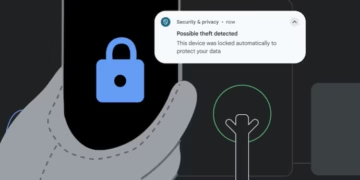Overview
Criticism of Abbreviated Spelling and Its Roots in Laziness or Education Gaps
Abbreviated spellings like “sup” for “what’s up” are often regarded by traditionalists as signs of educational shortcomings or laziness. However, simplified spellings might actually lower the barriers to literacy by removing complexities such as silent letters and irregular rules. Historical advocates like Benjamin Franklin supported more intuitive spellings for enhanced efficiency. These linguistic shortcuts are not always signs of neglect; they can also represent practical adaptations to modern communication needs, much like technological advancements streamline daily life.
Simplifications and the Risk of Linguistic Confusion
Reforming English spelling has always been challenging because the language system is vast and decentralized. A sudden influx of alternative spellings could potentially lead to widespread confusion. However, the gradual evolution of language—driven by informal usage—leads to natural changes over time. Common abbreviations like “OMG” and “LOL” now appear in major dictionaries, showing that language adapts to societal demands. This process allows English to remain versatile and efficient without descending into complete unpredictability.
Balancing Playfulness and Simplicity in Language Evolution
One argument against standardizing simplified spellings is that it could strip English of its unique charm and playfulness. The quirks of English contribute to its distinctiveness. Yet, evolution in language doesn’t necessarily eliminate creativity. Adjustments simply help make it better suited for contemporary use. For instance, reshaped spellings like “pizaz” or “oomf” may retain the energy and vibrancy that users enjoy while meeting modern efficiency needs.
Impact on Editors and the Future of Language Leadership
The gradual shift toward language adaptation might not eliminate traditional roles like editing. Editors will continue to hold an essential place in crafting clear and polished language, regardless of changes in spelling or usage trends. Their skills in refining communication will remain critical as the English language naturally evolves alongside societal and technological advancements.
Frequently Asked Questions

What are typical uses of language technology?
Language technology is widely used for tasks like machine translation, speech recognition, text-to-speech systems, and chatbots. It also enhances tools for analyzing large bodies of text, assisting with sentiment analysis, and enabling more accurate automated transcription services. Industries like healthcare, finance, and customer service frequently use these technologies for efficiency and better communication.
What kinds of jobs exist in language technology?
Careers in language technology include roles like natural language processing (NLP) specialists, computational linguists, machine learning engineers, and speech recognition developers. Professionals in this field may work in AI research labs, tech startups, or established companies designing applications for human-computer interaction or automated language systems.
What courses and degrees are available for studying language technology?
Many universities offer undergraduate and graduate-level programs in areas like computational linguistics, NLP, or artificial intelligence. Students can also pursue specialized courses focusing on speech processing, semantic analysis, or translation technologies. Online platforms provide certifications that help build foundational skills in machine learning and language modeling.
What does a Master’s program in language technology typically cover?
A Master’s degree in this field generally includes coursework on linguistics, computer science, and statistical modeling. Research projects often focus on solving problems such as improving translation accuracy or developing new language-based AI tools. The balance between theory and application aims to prepare graduates for careers or further academic research.
How is human language technology different from studying languages traditionally?
Unlike traditional language studies, which emphasize grammar, vocabulary, and cultural context, human language technology focuses on building systems that can understand or process natural language. It combines technology and science to study how machines can replicate human language comprehension for real-world tasks.
How is spoken language technology used in modern systems?
Spoken language technology is applied in devices like smart assistants, voice-operated GPS, and customer service bots. It also plays a critical role in accessibility tools such as screen readers and applications for those with hearing or speech impairments. Innovations in this area make communication with technology more seamless and intuitive.




































